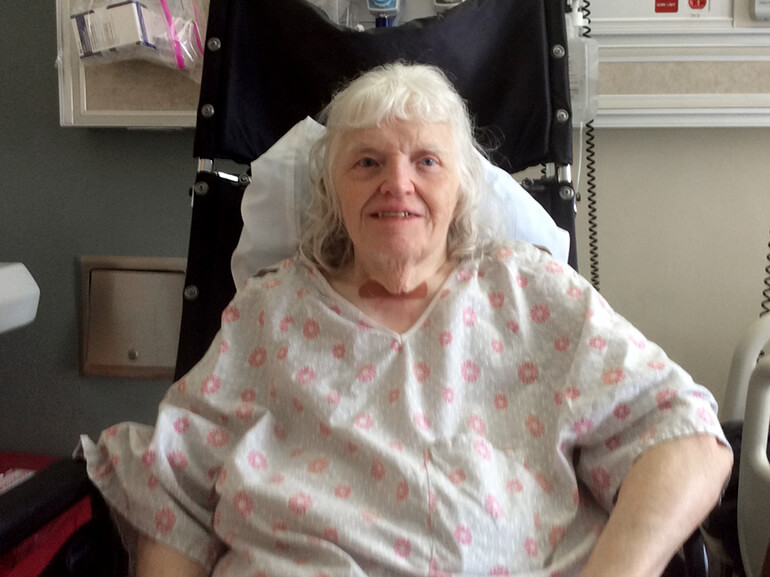Dorothy's Story

Reassuring support for a medical crisis in the midst of a pandemic
In late February, Dorothy Horschel, 75, became ill with abdominal pain and vomiting. She had a hernia operation scheduled, but knew something was wrong. Her husband Bernie took her to the hospital in nearby Springville, New York. Tests revealed a bowel obstruction and she transferred to a larger facility in Buffalo for intensive, emergency surgery.
Dorothy was placed on a ventilator but was unable to liberate after the procedure. She developed blood stream and urinary tract infections. Dorothy needed airway support, a feeding tube and pressurized dressing on the abdominal wound.
As Bernie and their daughter, Kathy, worried about their family’s emerging medical crisis, the COVID-19 pandemic landed in the United States. Bernie visited daily until the hospital mandated visitor restrictions for safety.
New York does not have critical illness recovery hospitals, so many families from the Buffalo area chose Select Specialty Hospital – Erie for its experience helping medically complex patients make a recovery.
To ease the transition during unprecedented times, our clinical liaison worked with the ambulance transport team and Buffalo General Hospital to arrange for Bernie and their daughter to see Dorothy as she headed to Pennsylvania. Standing a socially responsible distance away, they shouted encouragement as she was placed in the ambulance. Thrilled by the surprise, Dorothy departed grinning and waving.
Upon arrival, a physician-led team of nurses, therapists and dietitians evaluated her and created a plan to help Dorothy return home quickly.
Respiratory therapists tested Dorothy’s lungs to see if they were ready to work on their own. Therapists led stamina-building breathing and coughing exercises, gradually reducing the amount of work the machine performed. As she improved, therapists added a valve to the airway support that allowed more normal speech.
At the same time, physical and occupational therapists implemented a mobility program. While still on a ventilator, they helped Dorothy sit up in bed, move to its edge and finally into a chair. Studies show that small movements such as these improve chances of liberating.
“I did not feel like getting up, but I knew I had to,” Dorothy said. “Everyone was so helpful in motivating me to start moving.”
Within two weeks, Dorothy liberated from the machine. Shortly after that, airway support was discontinued, and Dorothy was breathing on her own.
Speech language pathologists (SLPs) stepped in with exercises designed to get Dorothy’s mouth, throat, tongue and jaw working together again. Dietitians crafted meal plans optimized for safety, texture and consistency as she grew stronger. SLPs also helped her relearn how to speak clearly.
Wound nurses cared for her surgical site until she was healing and well enough to have the pressurized dressing removed.
Dorothy said she was nervous coming to a hospital that was hours away in the middle of a pandemic, but the staff helped calm her fears, facilitating video chats with her family. “I could not have asked for better care,” she said.
By the end of April, Dorothy met all her major goals. She was walking short distances, eating and breathing on her own and caring for herself. She left for home, eager to see her family again.
Her advice for anyone considering care in a critical illness recovery hospital is, “keep doing everything they tell you, every day. Don’t lose hope and take it one step at a time.”